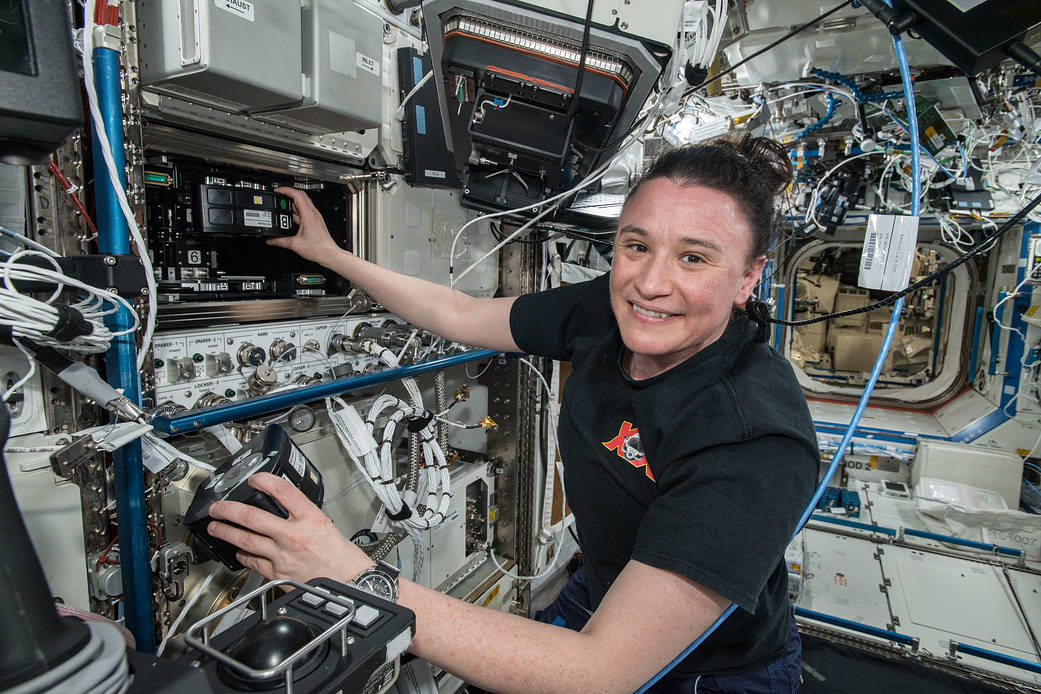Astronaut Serena Auñón-Chancellor installs samples for the Microgravity Investigation of Cement Solidification (MICS) experiment aboard the International Space Station (ISS) in this image from Nov. 27, 2018. MICS explored how cement solidified in microgravity, important research for constructing safe space habitats on the Moon or Mars and for improving cement processing on Earth.
Dr. Auñón-Chancellor was selected in July 2009 as one of 14 members of the 20th NASA astronaut class. During Astronaut Candidate Training, she spent 2 months in Antarctica from 2010 to 2011 searching for meteorites as part of the Antarctic Search for Meteorites expedition. Most of that time was spent living on the ice 200 nautical miles from the South Pole.
Her first flight was to the ISS, where she logged 197 days in space as the flight engineer of Expedition 56 and 57. The Expedition 56 and 57 crews contributed to hundreds of experiments in biology, biotechnology, physical science and Earth science aboard the ISS.
Throughout National Hispanic Heritage Month, we’re celebrating the contributions of the brilliant Hispanic people of NASA.
Image credit: NASA
2018年11月27日,宇航员瑟琳娜·奥南-钱塞勒在国际空间站(ISS)上为水泥固化微重力调查(MICS)实验安装了样本。MICS探索了水泥在微重力条件下的固化过程,这是在月球或火星上构建安全空间栖息地和改善地球上水泥加工的重要研究。
2009年7月,奥南-钱塞勒博士被选为NASA第20届宇航员班的14名成员之一。在宇航员候选人培训期间,作为南极陨石搜寻探险队的一员,她从2010年到2011年在南极洲花了2个月的时间搜寻陨石。他们大部分时间是在离南极200海里的冰上度过。
她的第一次飞行是到国际空间站,在那里她作为第56号和57号远征队的飞行工程师在太空飞行了197天。第56号和57号远征队机组人员在国际空间站上进行了数百次生物学、生物技术、物理科学和地球科学实验。
在整个国家拉美裔遗产月,我们都在庆祝NASA杰出拉美裔的贡献。
图片来源:NASA







